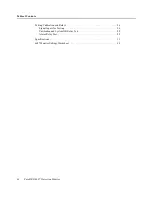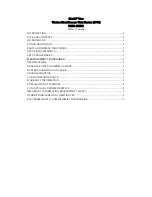
Entek IRD 6687 Protection Monitor
1
6687
1.
6687 Monitor
This manual introduces you to the Entek IRD 6687 protection monitor. It is intended for
anyone who installs, tests, configures, or uses the 6687 protection monitor. This manual
covers the 6687 with the version 2.50 firmware.
Introduction
The Entek IRD 6600 Series protection monitors are part of a modular protection system for
critical machinery. Each monitor is a stand-alone unit, using a separate power supply, relays,
and wiring termination unit. Each monitor in the 6600 Series fulfills a different role in
providing comprehensive machinery protection.
Monitor Description
The 6687 protection monitor provides continuous monitoring of the input signal from a
linear variable differential transformer (LVDT) or non-contact eddy current probe. The 6687
independently monitors the DC value for each input channel, providing position information
from each sensor. In addition, the 6687 continually compares the value to the Alert and
Danger alarm setpoints.
The monitor buffers the last 30 minutes of values (1 per minute) for each channel. In the
event of a Danger alarm, or a “first out” Danger alarm message from another monitor, the
6687 stores this data in a separate memory area. A “first out alarm” is the first alarm in an
interconnected series of monitors. This feature allows later analysis of the data leading up to
the event that caused the Danger alarm. You can retrieve any of this data from the monitor
using the MODBUS protocol through a 4-wire multi-drop serial interface.
Caution: Do not connect the monitors to the transducers until you are sure of the power
connections. Transducers could be damaged if the transducer supply is not correct.
Application
The 6687 is appropriate for monitoring case expansion on a variety of machines. Typically
this involves measuring the thermal growth of one end of the case relative to the fixed
position of the LVDT or non-contact probe. LVDTs are preferred for this application
because they provide a DC signal proportional to the position of the case, and can monitor a
wider linear range than non-contact probes. Case expansion signals are expressed in linear
units of micrometers, millimeters, inches, or mils (1 mil = 0.001").
The 6687 can also monitor the input from a cam potentiometer. It could be used for
applications such as monitoring guide vane position, and includes rotational units (°rot).














































